Cammus C5 Direct Drive Steering Wheel
About a year and a half ago, we received and reviewed the GT1 DD bundle from Chinese manufacturer Cammus, officially known as Shenzhen CAMMUS Electronic Technology Co., Ltd. We were quite enthusiastic about this combination of the 15Nm Direct Drive wheelbase and the included steering wheel, particularly due to its very favorable price for a Direct Drive wheelbase. Even after completing the review, we continued to use this wheelbase regularly on one of our sim rigs.
In the meantime, Cammus has been actively developing new products. Among these are two sets of pedals and a steering wheel with a built-in Direct Drive motor – the Cammus C5 Direct Drive steering wheel. Similar to Thrustmaster and Logitech wheels, the C5 is specifically suitable to be used on a desk. Cammus approached us to test and evaluate the C5 Direct Drive steering wheel. Our interest was piqued due to the unique concept of this steering wheel, making it easy for us to answer their request.
At the time of writing, the Cammus C5 Direct Drive steering wheel is priced at $249.00 on the Cammus webshop, including VAT when ordered through the ‘Over-sea’ warehouse page. For $299.00, the Cammus C5 is available with the CP5 pedal set, which we will not be covering in this review. Additionally, we are providing a 5% discount code for orders through the Cammus webshop.

Packaging & Contents
We received both the Cammus C5 Direct Drive steering wheel and the corresponding desk clamp from Cammus. These items arrived in a brown shipping box and were delivered to us within 3 days through the FedEx courier service. Inside the shipping box, we immediately found the product boxes from Cammus.
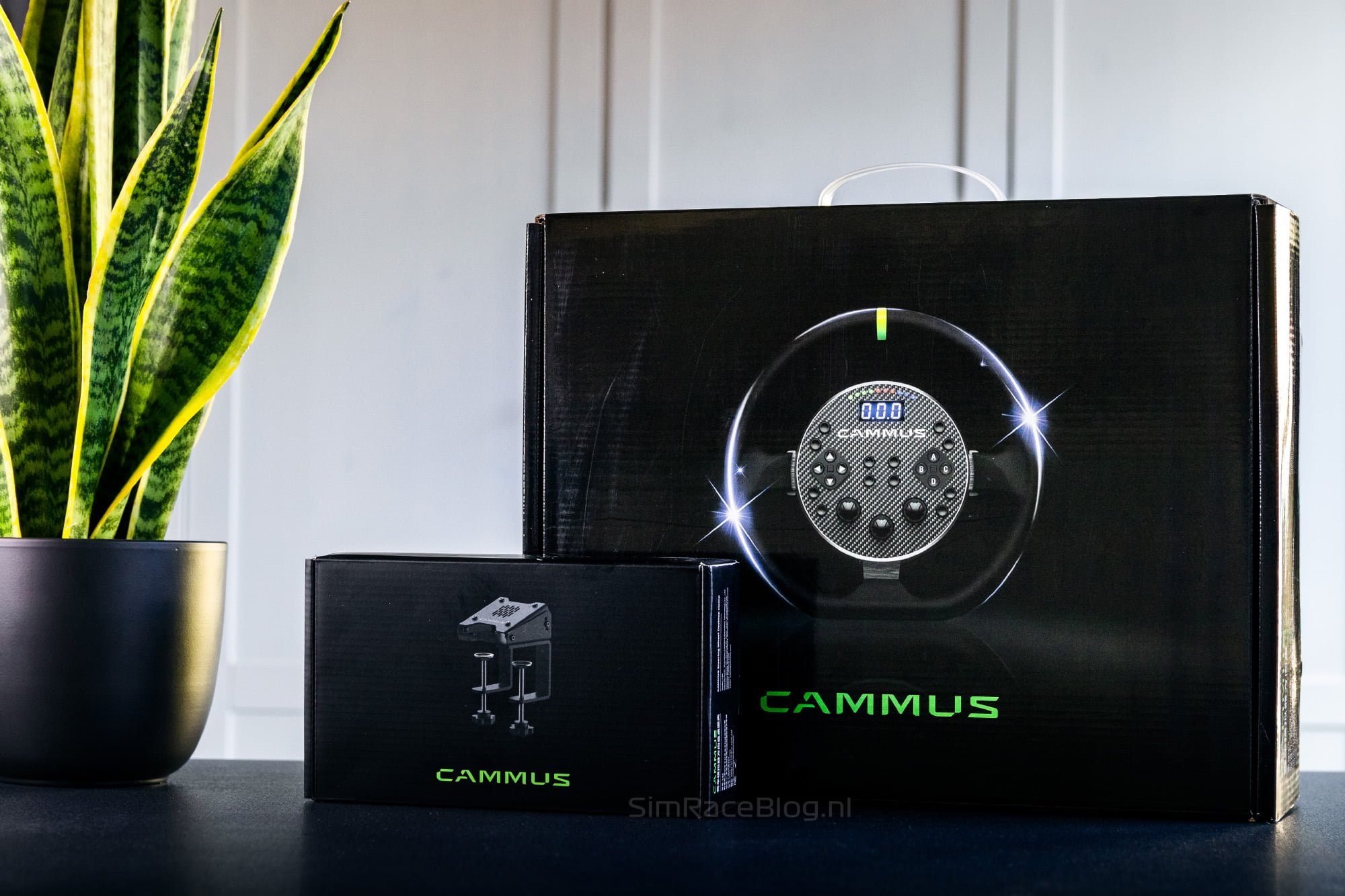
The product box of the Cammus C5 Direct Drive steering wheel is a glossy black box adorned with Cammus branding, a full-color image of the steering wheel, and relevant product information. Upon opening the product box, the first layer reveals soft black foam with the user manual on top. Next to this foam layer, there is a white elongated box that we decide to open first. Inside this box, we find the power supply and its corresponding European power cable for the steering wheel, two brackets, a USB cable, a fan, two stickers for the steering wheel, and a small bag containing an Allen wrench and some small bolts. Beneath the mentioned foam layer, the steering wheel is nestled in a well-fitted cutout, ready for use.
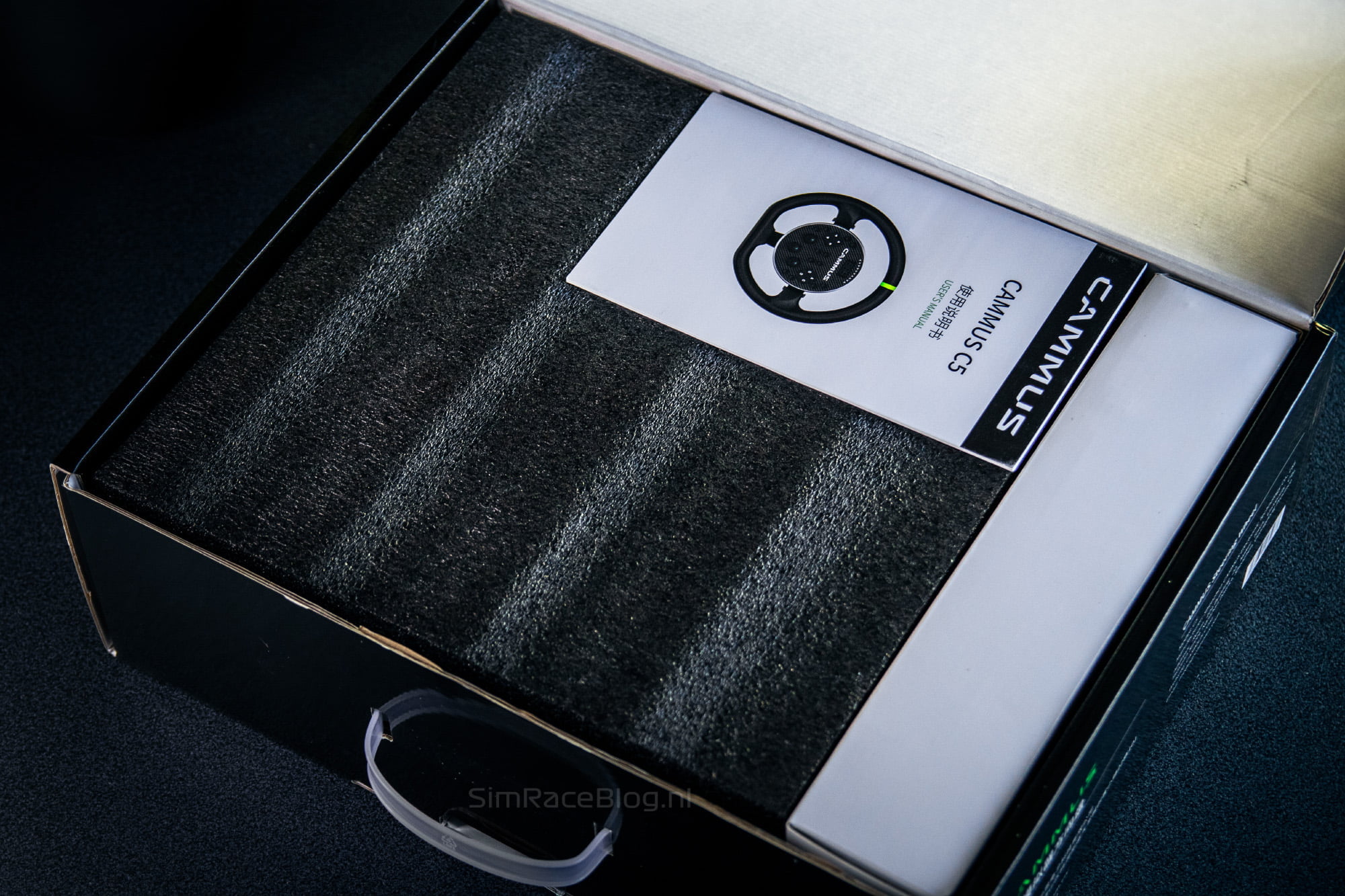

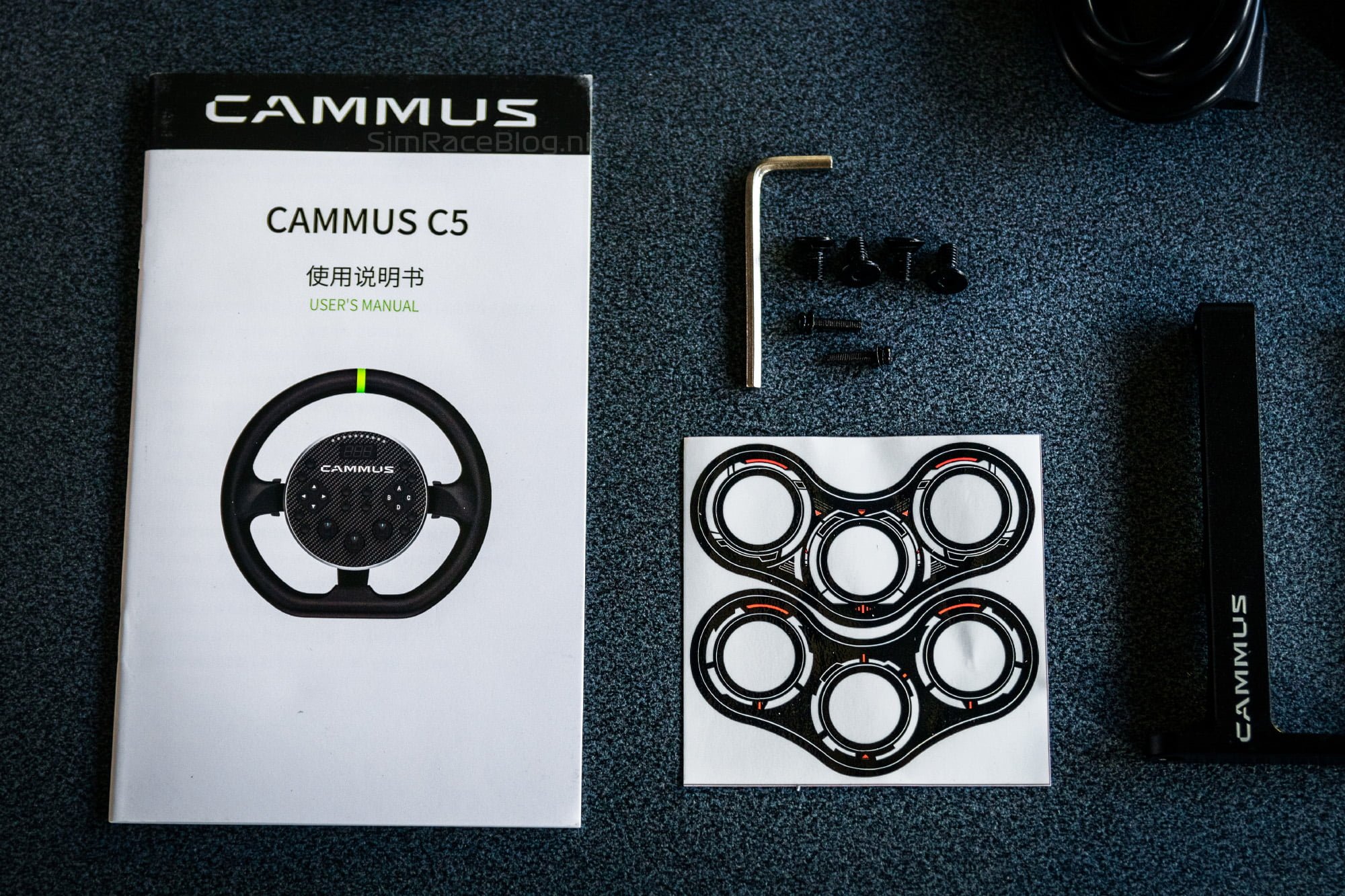

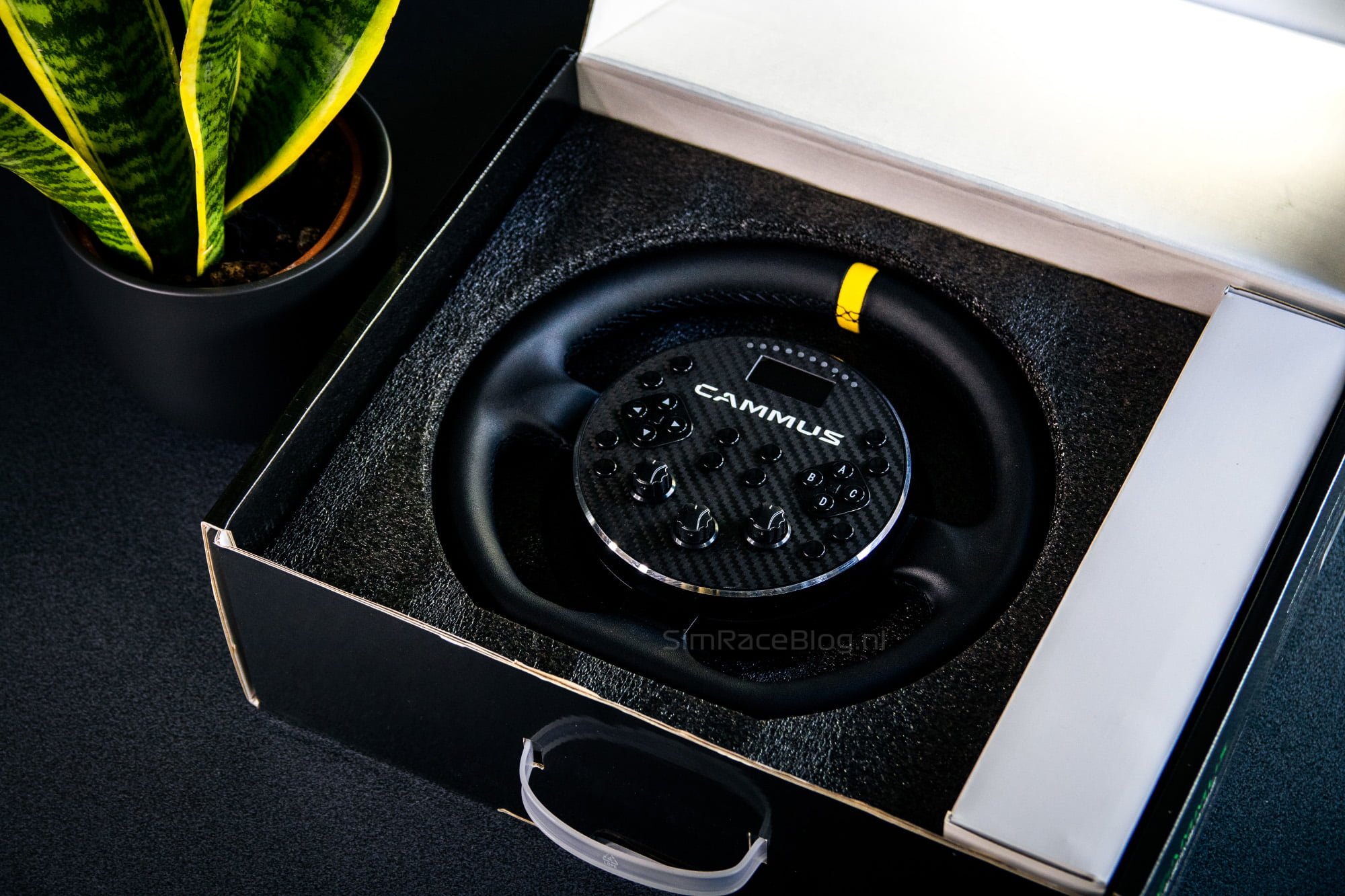

The product box of the desk clamp is matte black and features the same Cammus branding, along with an image of the desk clamp itself. Inside this box, we find the components of the desk clamp, a bag containing the necessary mounting materials and a screwdriver, and two soft fabric stickers that we presume are meant to be placed on the inside of the clamp to protect the desk from damage. Despite two brackets and the main part of the clamp being wrapped in bubble wrap, these components unfortunately show some visible damage, which we find less than desirable considering the price point of the C5 Direct Drive steering wheel. Nevertheless, Cammus has delivered an overall well-presented package that looks good, and we are eager to start using it.
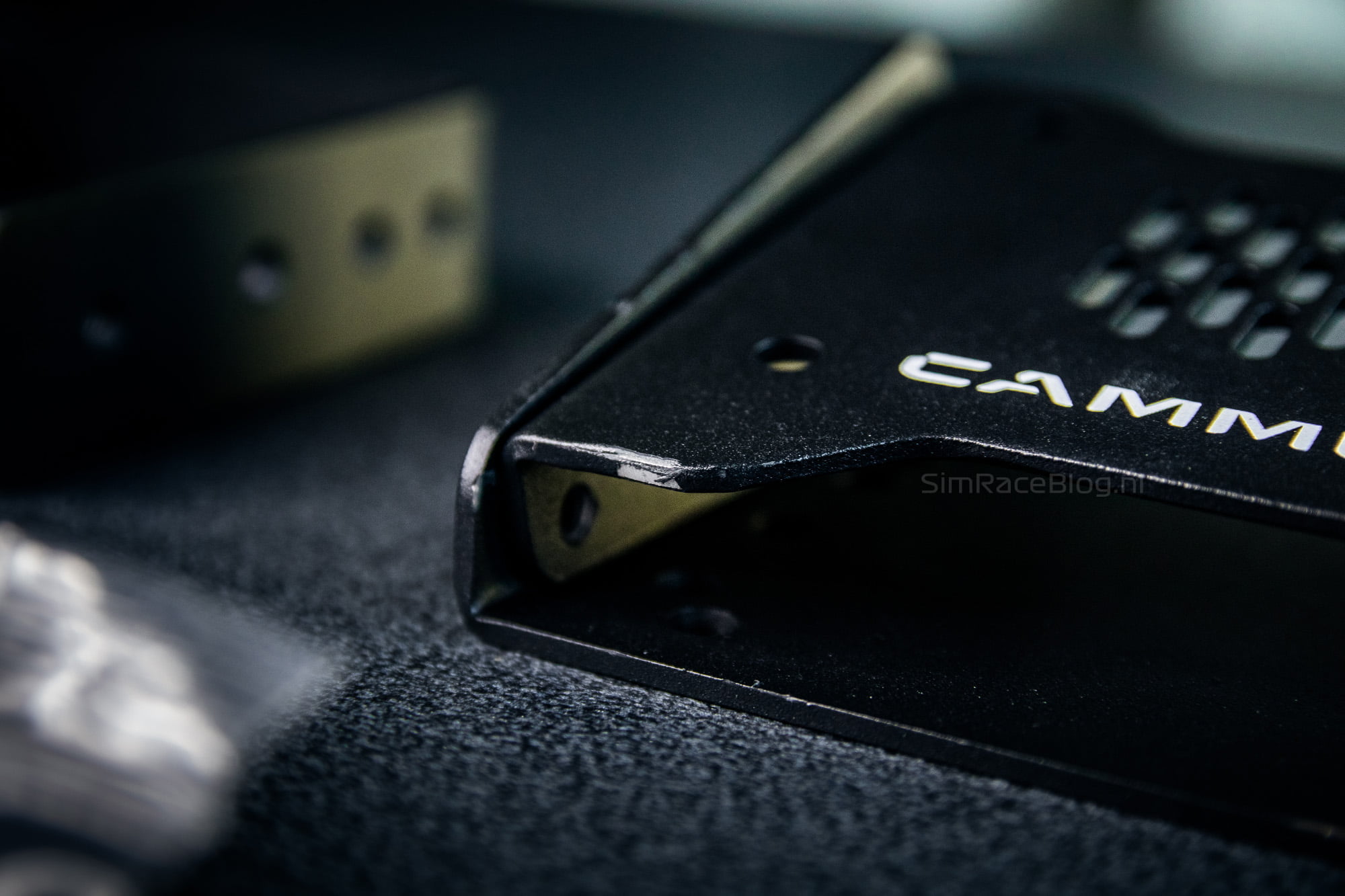
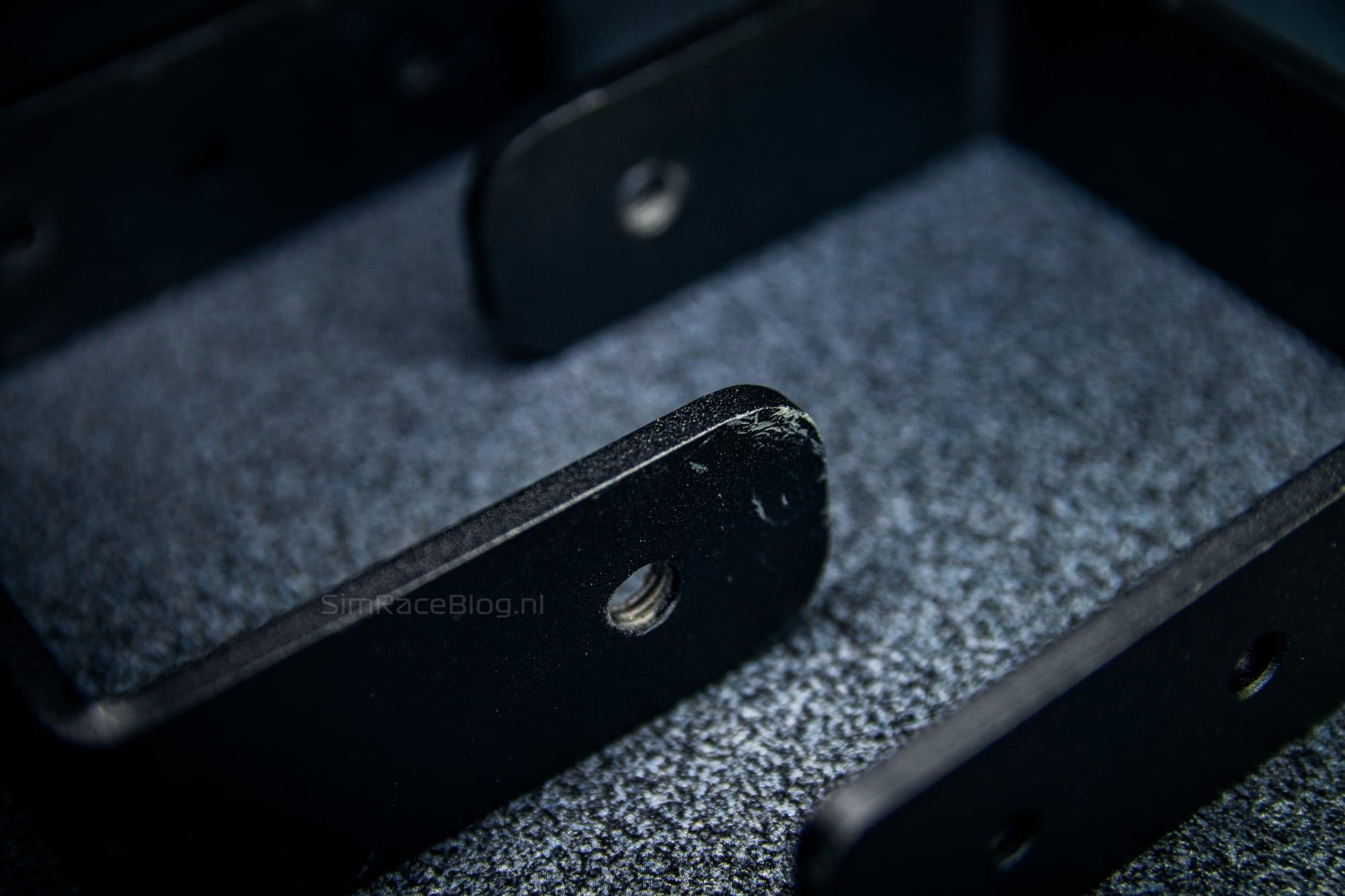
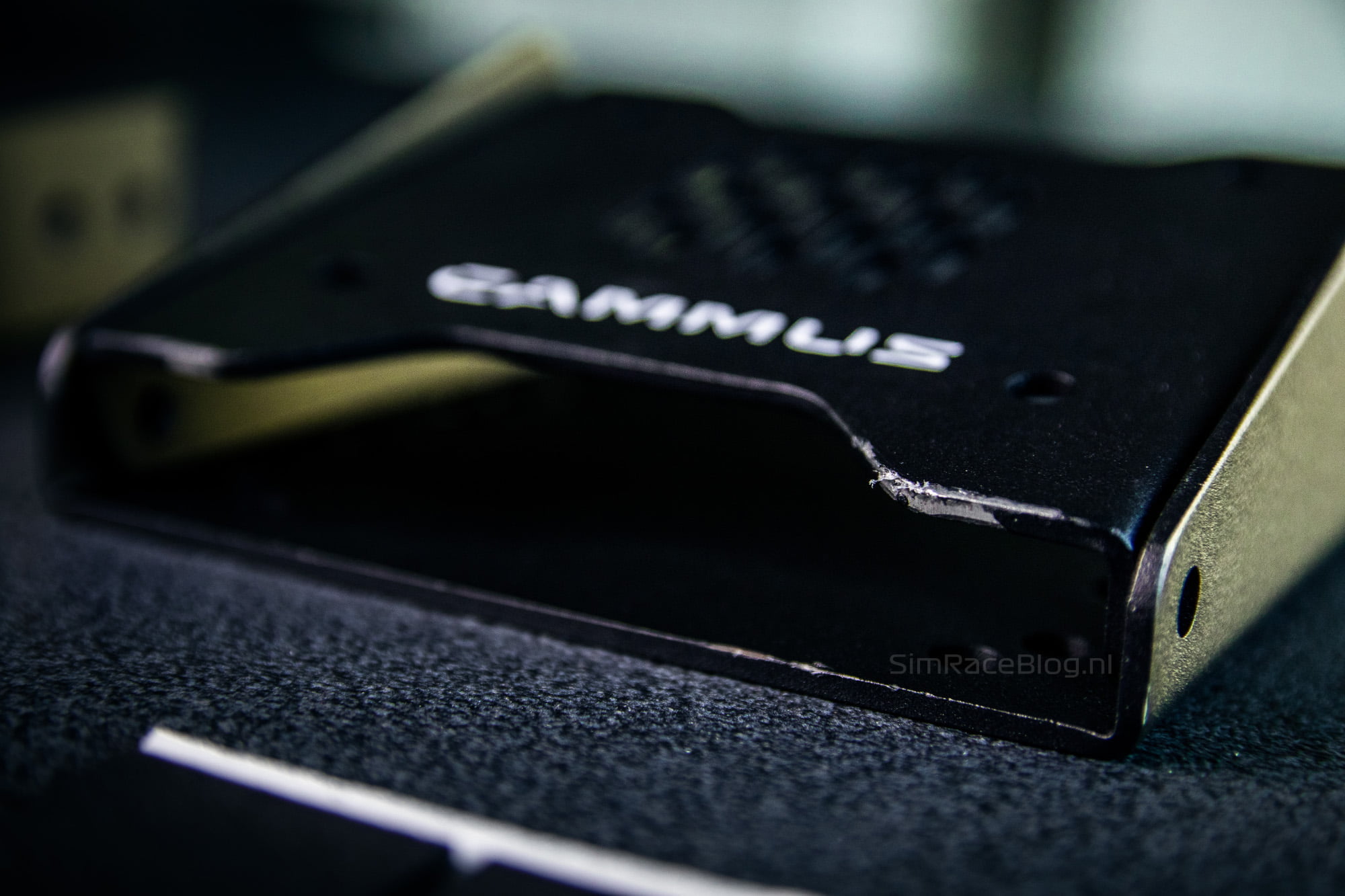

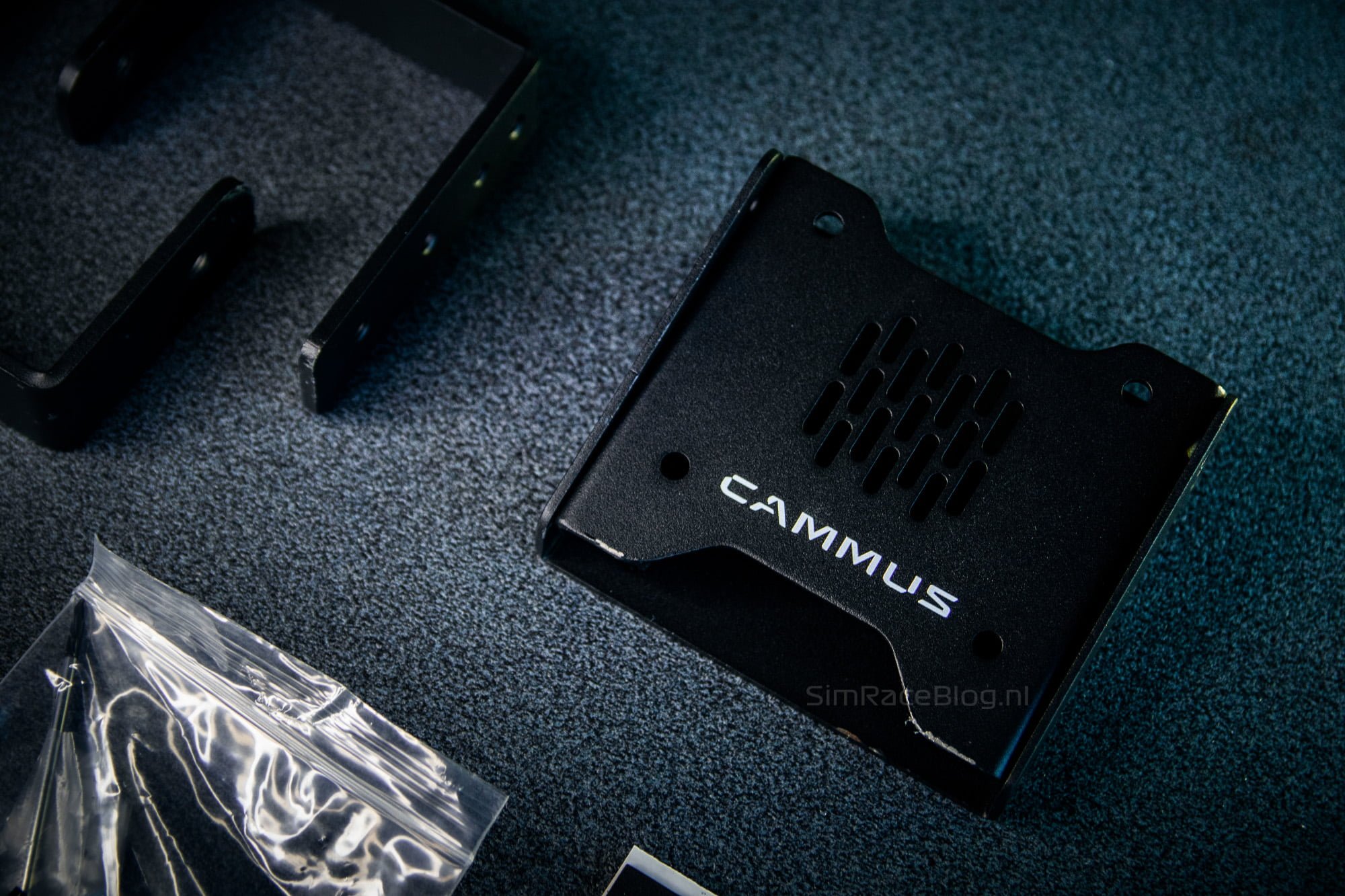
Engineering & Quality
As mentioned, the Cammus C5 is a direct drive steering wheel, although you wouldn’t necessarily guess that based on its appearance. Unlike typical setups where you can clearly see a wheelbase behind a steering wheel, even in cheaper gear- or belt-driven steering wheel-wheelbase combinations, this is not the case with the Cammus C5. The direct drive wheelbase is virtually integrated into the housing of the steering wheel itself. Initially, the steering wheel feels somewhat heavy and cumbersome, but we anticipate that this sensation will diminish while driving. The steering wheel is fundamentally constructed from black anodized aluminum, providing a remarkably sturdy and high-quality feel. The front of the steering wheel is finished with carbon fiber.
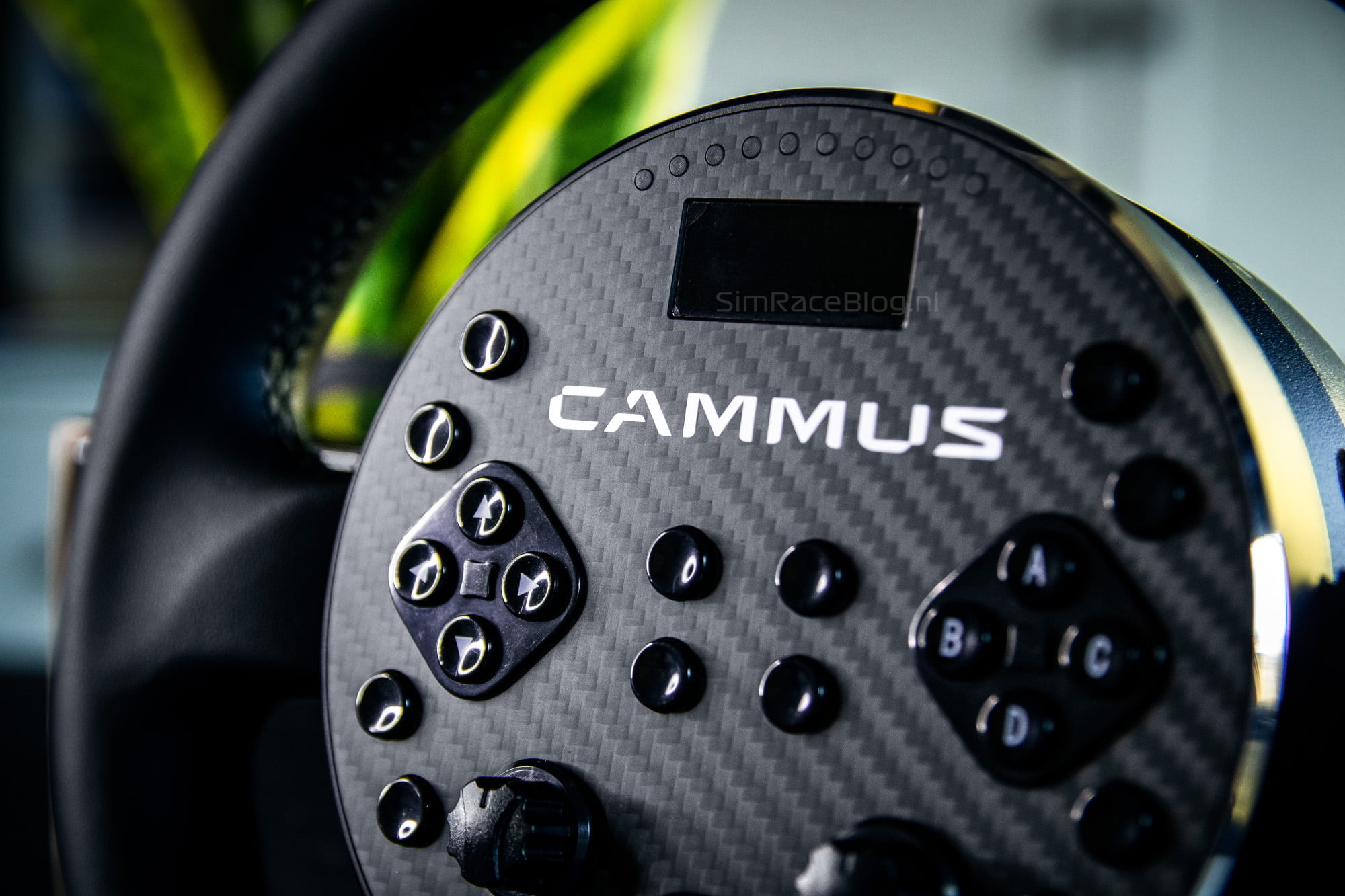

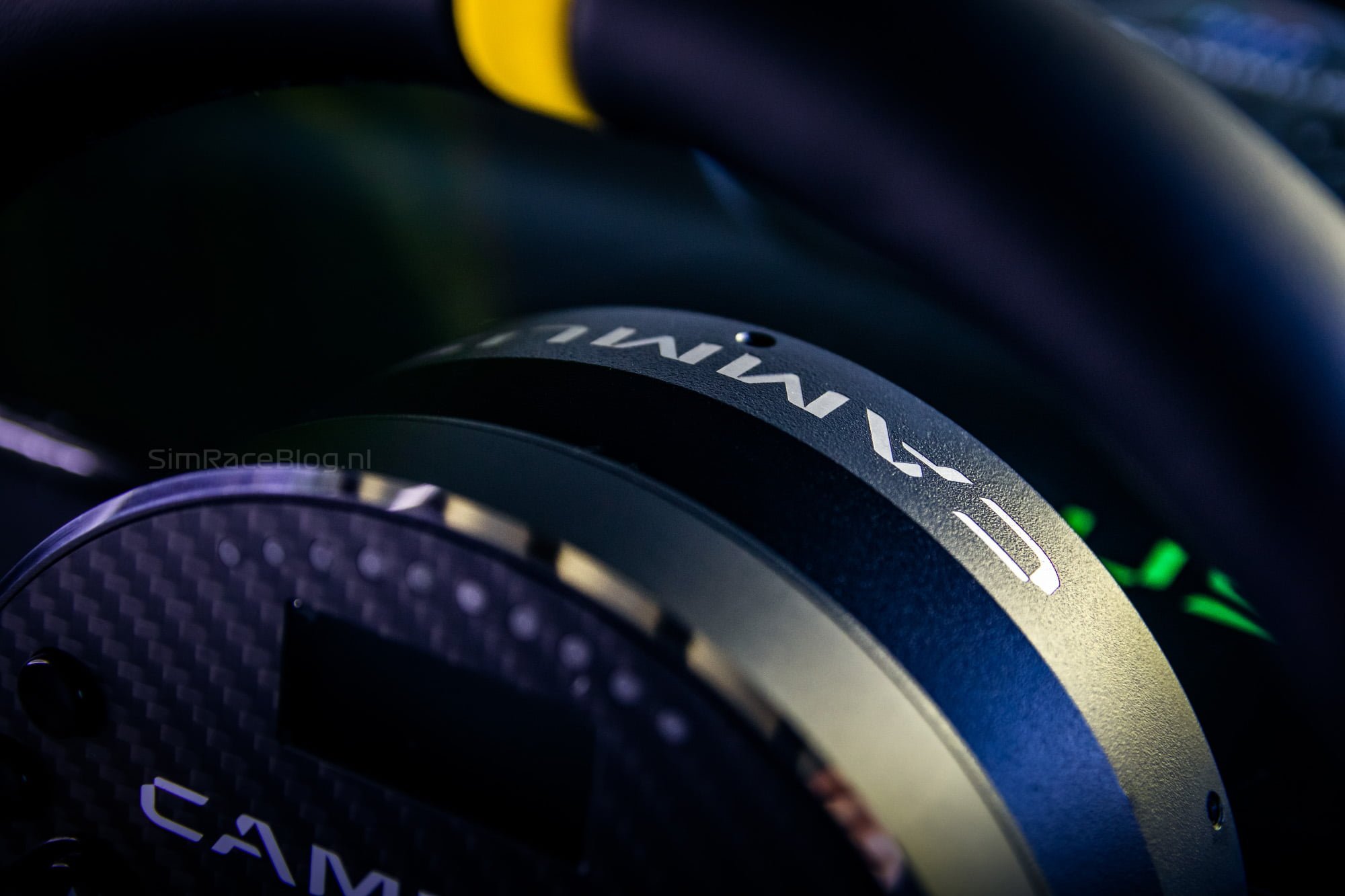

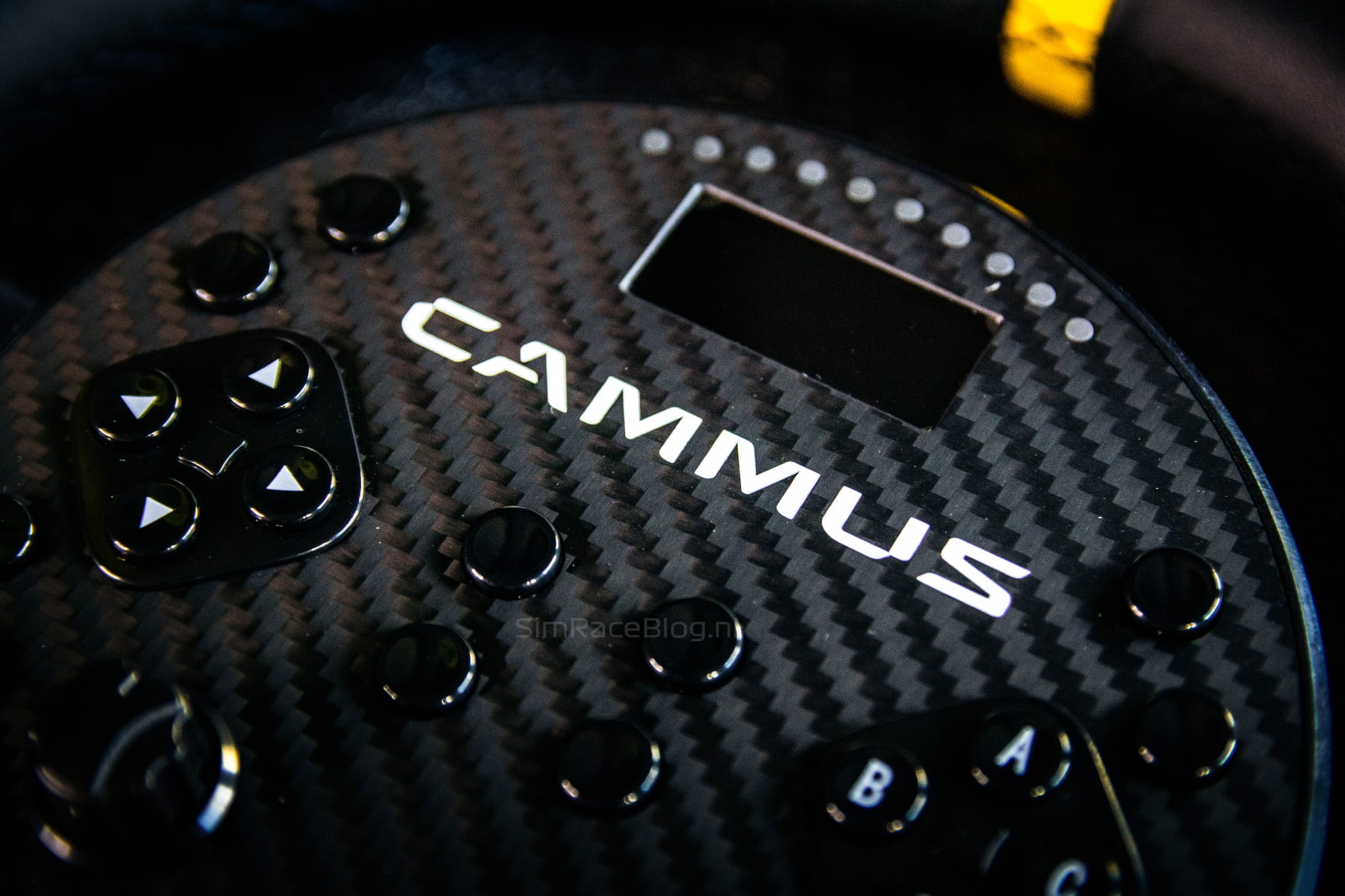
The Direct Drive motor of the Cammus C5, as implied by its name, delivers 5Nm of holding torque, with peaks of 6-7Nm. These are excellent figures for a steering wheel that appears to be particularly well-suited for desk use. With a width of 278mm, the steering wheel is on the narrower side for a round or D-shaped wheel. However, the initial impression is that it fits comfortably in the hand, with the neatly stitched faux-leather material providing a pleasant, soft, and non-sticky feel. The overall thickness of the steering wheel, including the motor but excluding the buttons, is only 67mm. We consider this quite impressive, especially in conjunction with the rest of its specifications.
The Cammus C5 steering wheel is generously equipped with buttons, featuring a total of 20 regular push buttons. On both the left and right sides, there is a group of buttons arranged in a diamond shape. The left group has buttons for up, down, left, and right, while the group on the right includes buttons labeled A, B, C, and D. The push buttons have a short travel and provide a fairly standard feedback, neither exceptionally good nor bad. All push buttons are configurable to suit individual preferences. Additionally, there are three plastic rotary encoders on the front of the steering wheel. Unfortunately, in our case, the middle one is not aligned properly, and we cannot position it perfectly upward or downward. The front is further equipped with 10 RPM LEDs and an analog, one-and-a-half-inch display.


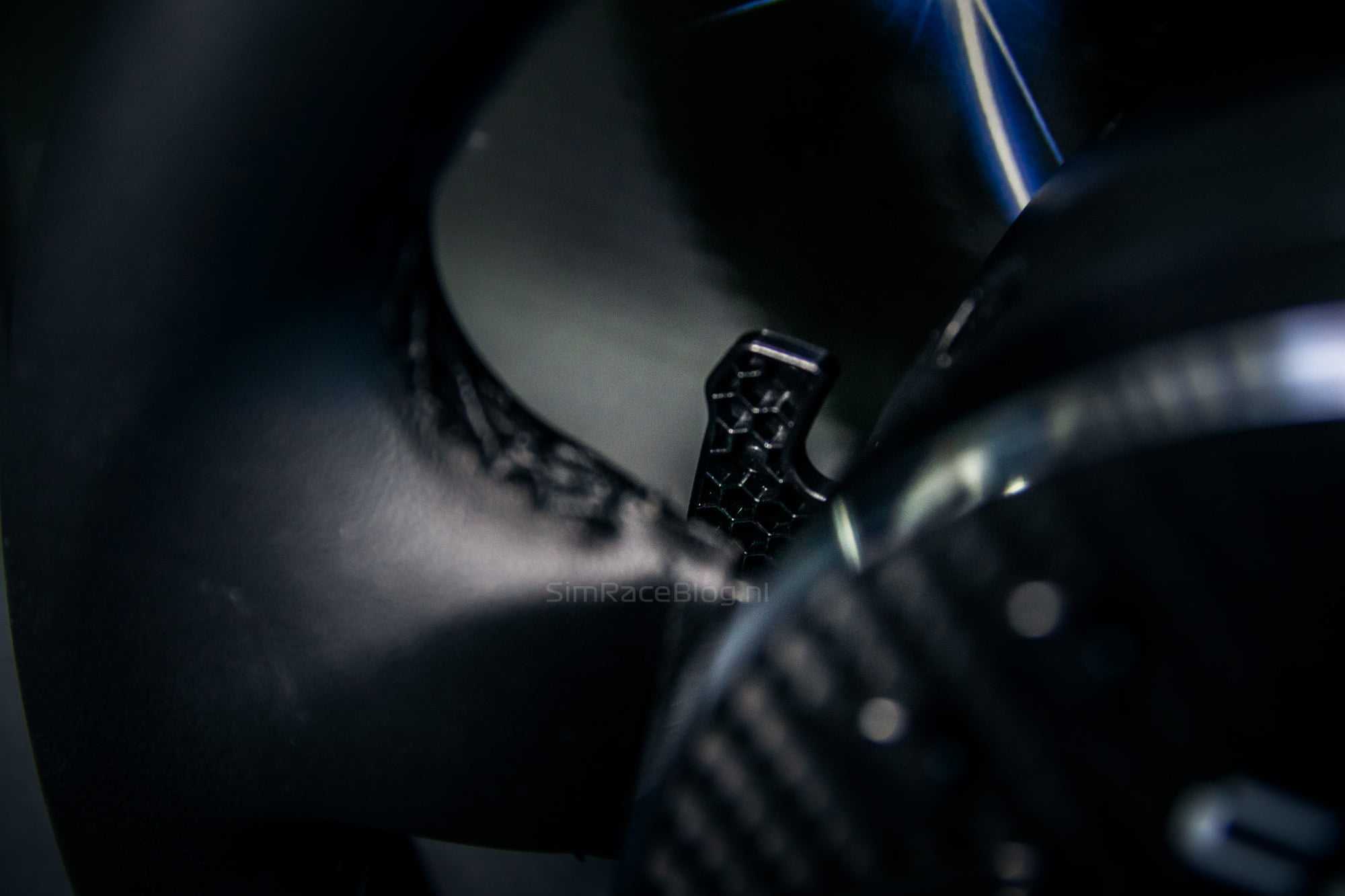
At the rear of the steering wheel are the two plastic paddle shifters, which are the smallest we have seen on a steering wheel thus far. Additionally, on the backside, there are the power on/off button, the reset button, the power input port, a connection for the included fan, a USB port for connection to the PC, and two USB-C ports.
In conclusion, the Cammus C5 is constructed with high-quality materials, and the steering wheel feels surprisingly robust and well-made. Especially considering its price point, the steering wheel has exceeded our initial expectations in these aspects.



Mounting
Since we received the desk clamp from Cammus, and we’ve mentioned that the steering wheel seems to be particularly suitable for desk use, that’s precisely how we intend to test the Cammus C5. Before hitting the virtual road, we first assemble and mount the clamp on the C5 steering wheel. The manual falls slightly short in this regard, omitting a few basic steps, such as assembling the parts placed around the desk and applying the fabric stickers. With a bit of insight, these issues can be resolved easily. Fortunately, the manual is visually clear. We also promptly install the included fan in the clamp. The angle of the desk clamp can be adjusted with a margin of 10 degrees in three different steps. We opt for the highest setting with the steepest angle. Assembling the clamp takes a bit more time than anticipated, but once assembled, it feels securely in place. Finally, we attach the fabric strips to the inside of the clamp legs to prevent damage to the desk. With the Cammus C5 securely mounted, we connect the power and USB cables and are ready to configure the steering wheel.

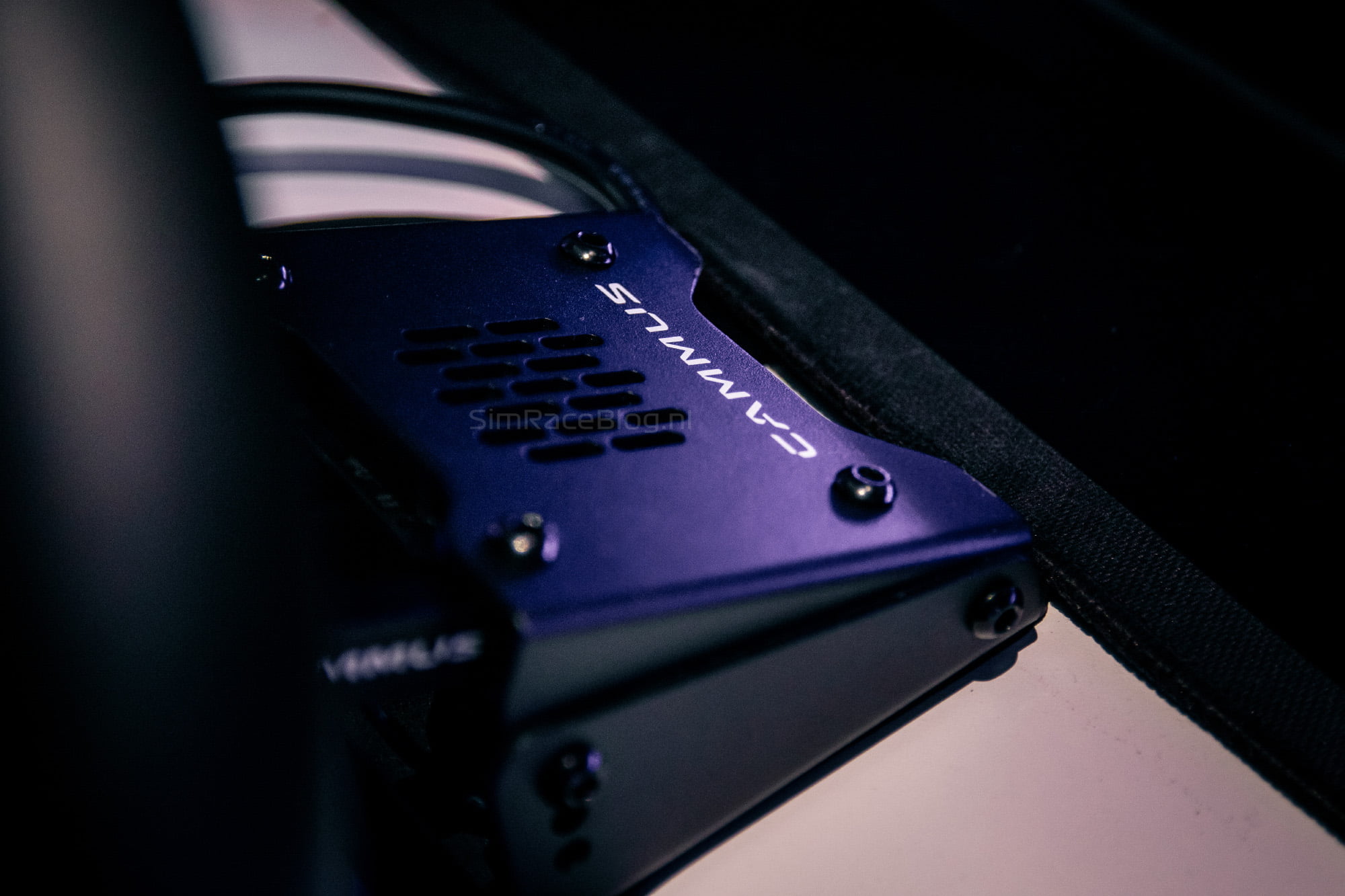
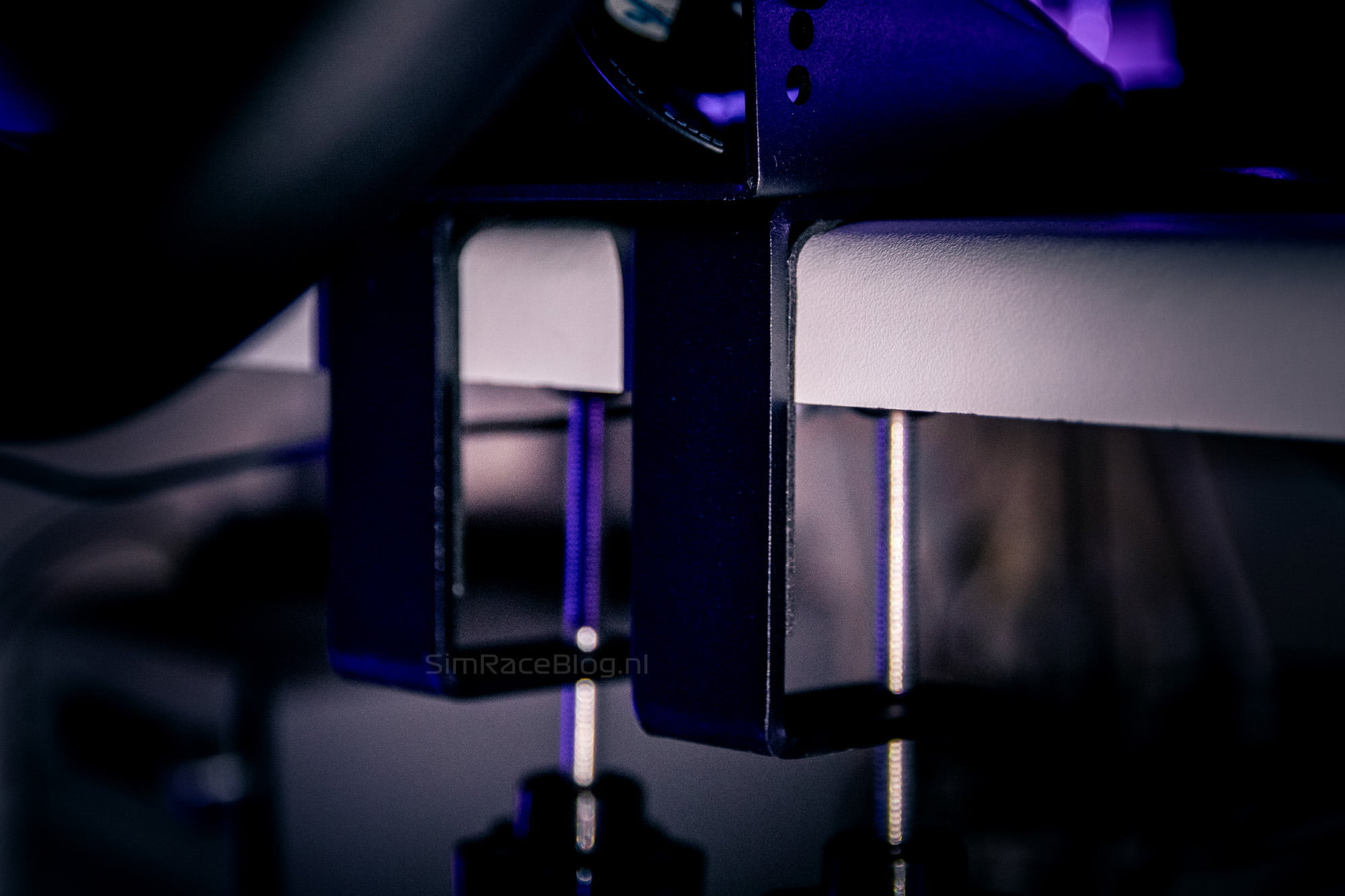


Software
We are already familiar with the Cammus software from our Cammus GT1 DD Bundle review. However, we first install the latest version downloaded from the Cammus website. Once installed, the program retains its sleek and user-friendly appearance. Upon startup and turning on the Cammus C5, it is immediately recognized as both a wheelbase and a steering wheel.
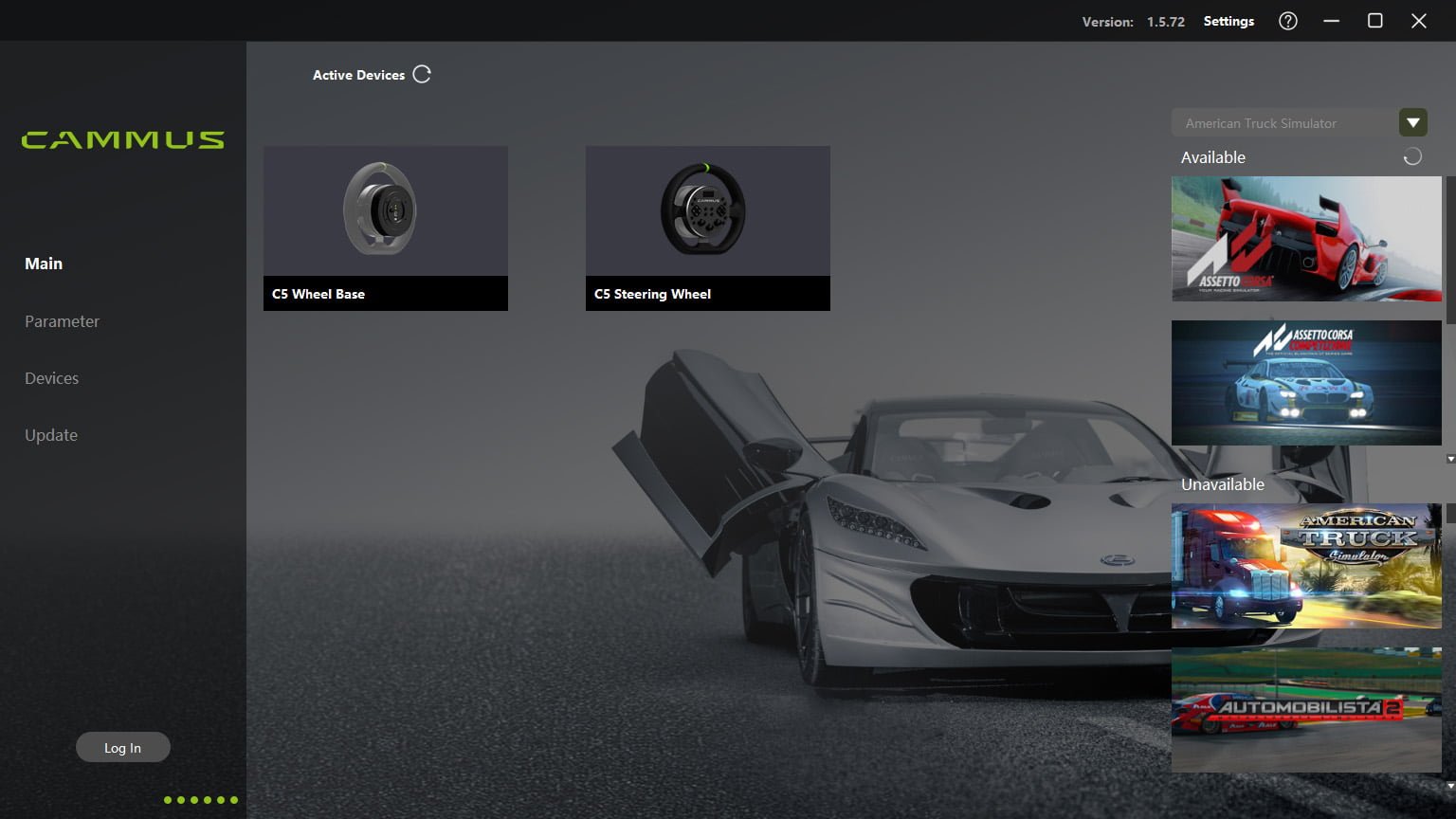
Through the “Parameter” tab, we can configure the Direct Drive wheelbase of the steering wheel. Three additional tabs appear in the middle of the screen: Base Settings, Game Effects, and Assistance. We start with the Base Settings. Here, we can initially center the steering wheel, which turns out to be unnecessary as the steering wheel is nicely centered out of the box. Additionally, we can adjust the rotation of the steering wheel, with preset buttons available for commonly used settings like 360 and 1080 degrees. Below, we find the basic settings for the Direct Drive motor, allowing us to adjust the force and settings such as damping and friction on the steering wheel. An ‘i’ icon is present next to each effect to provide more information about the setting, although we find this information to be somewhat concise for beginners in sim racing. On the Game Effects tab, we encounter settings to customize or filter effects from the game. While there are sufficient options to configure the Direct Drive motor, we are accustomed to having a bit more choices to fine-tune details, filtering, and damping according to preferences. Finally, there is the option to save, load, import, and export presets.

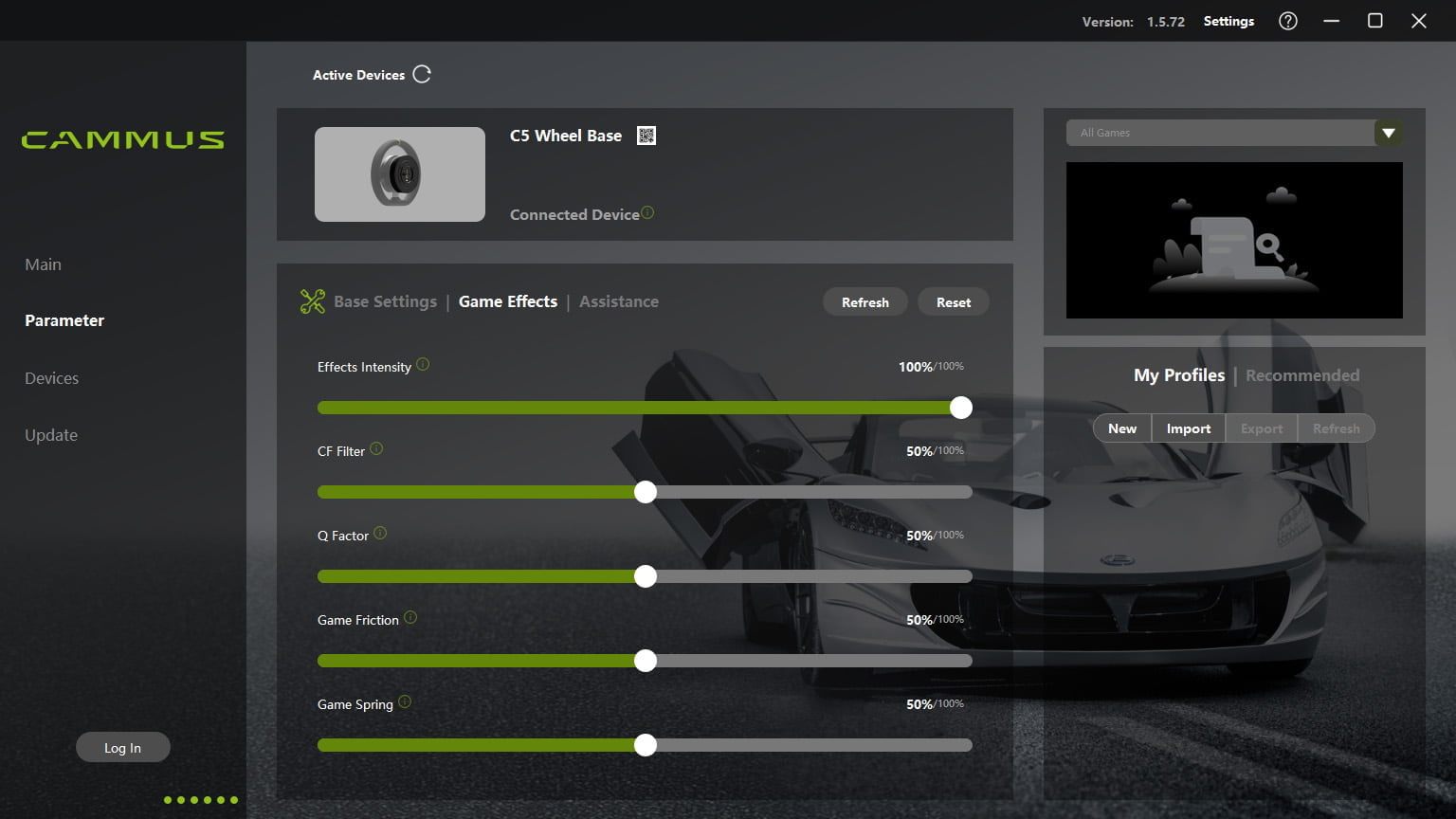
The Assistance tab is new to us in this version of the software. Here, we initially find the option to invert force feedback. This may be necessary for games that send the force feedback signal in reverse, requiring steering against the wheel to keep it centered, for example. Additionally, there is the built-in “Hands-off protection,” a feature we have appreciated in other wheelbases before. It recognizes whether the steering wheel is being held or not, disabling force feedback when it is not being held to prevent it from uncontrollably spinning. We can now also adjust the hardness of the steering wheel’s end stop, and there is an option called “High-speed stability assist,” which acts as a form of dynamic damping of the feedback depending on the speed you are driving. Finally, Cammus has incorporated “Overheat protection,” reducing the output of the wheelbase in case of overheating, with the threshold value being adjustable.


On the “Devices” tab, we can examine the steering wheel itself. Two tabs appear in the middle of the screen: Steering Wheel and Dashboard. Let’s start with Steering Wheel. Here, we can once again adjust the steering angle, which appears somewhat redundant. The value we modify here is instantly reflected on the “Parameter” tab as well. The same applies to centering the steering wheel. Additionally, we can check the functionality of all buttons and inputs here, both in the list of numbers in the middle of the screen and through the visualization in the bottom right corner.


On the “Dashboard” tab, we have a few additional features. We can adjust the brightness of the display and choose whether to display speed in kilometers or miles per hour, or the gear we are in. Additionally, we can customize the colors of the RPM LEDs, with a few preset color patterns available. Finally, for each rotary encoder, we can decide whether it functions as a rotary switch with 12 positions or as a directional encoder, registering only whether it is turned left or right.
Cammus has made considerable strides in further developing their software compared to our Cammus GT1 DD review some time ago. Although the software may not be as in-depth as that of other wheelbases, we believe the features will be more than sufficient for the target audience of the Cammus C5.
Using the Cammus C5 Direct Drive steering wheel
We are going to test the Cammus C5 steering wheel in Assetto Corsa and Assetto Corsa Competizione. We begin with Assetto Corsa, configuring the steering wheel in Assetto Corsa Content Manager in a matter of seconds. The initial virtual kilometers will be covered in the Lamborghini Huracán GT3, followed by the Exos 125 formula car.
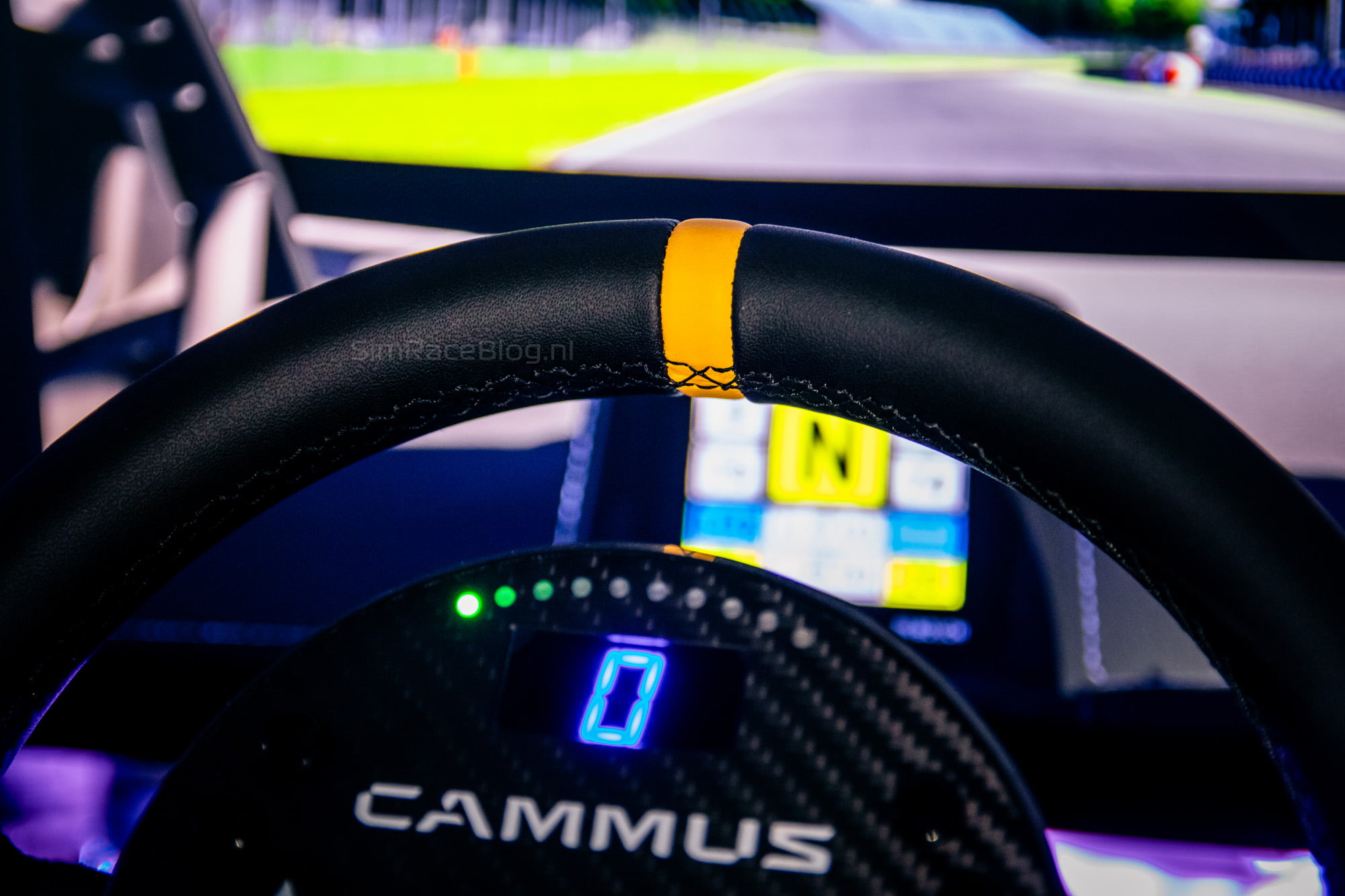
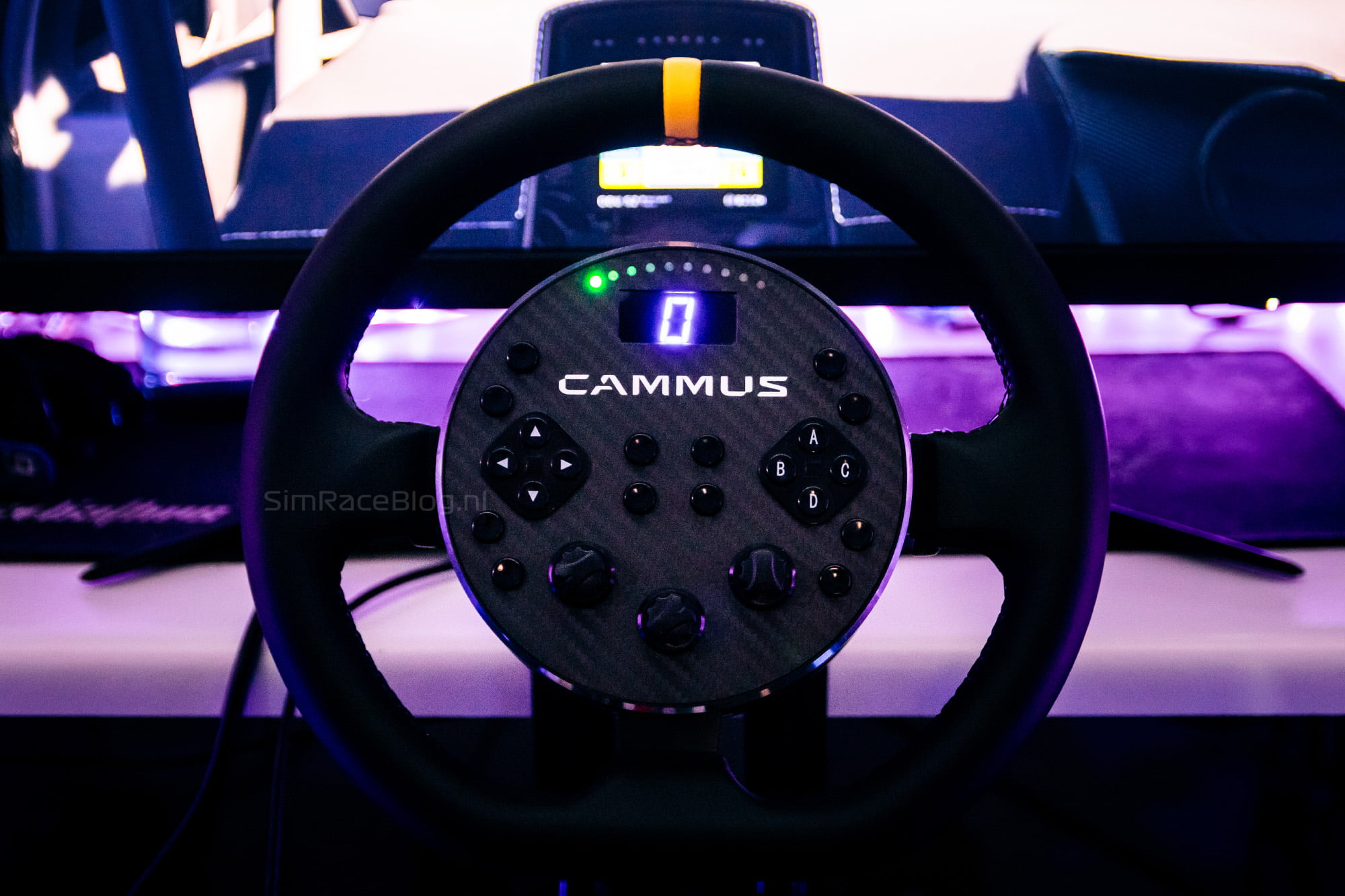
The initial impression the Cammus C5 provides is surprisingly positive and, in some aspects, even impressive. We consider the diameter of the steering wheel to be on the smaller and tighter side, but it feels superb in the hand, taking into account the price range and target audience of the wheel. The faux-leather material, while slightly firm during driving, is exceptionally comfortable, offering sufficient grip without being sticky. The steering wheel is also comfortable to hold without gloves. Once in motion, the steering wheel doesn’t feel as heavy and cumbersome as expected when initially handled. Despite its very small motor, the Cammus C5 steering wheel indeed packs a punch. In this price range, where one would typically opt for a belt- or gear-driven wheel, we experience a genuine direct drive feel on our desk. However, with the wheelbase and in-game feedback set at 100% strength, we do experience clipping. This means that, during steering input for instance, the wheelbase is already at its maximum power output, unable to provide additional feedback and details. As a result, the steering wheel feels “dead” until in-game forces decrease and fall within the range of the steering wheel again. This is entirely normal for lighter wheelbases, and we address it by lowering the in-game force feedback.

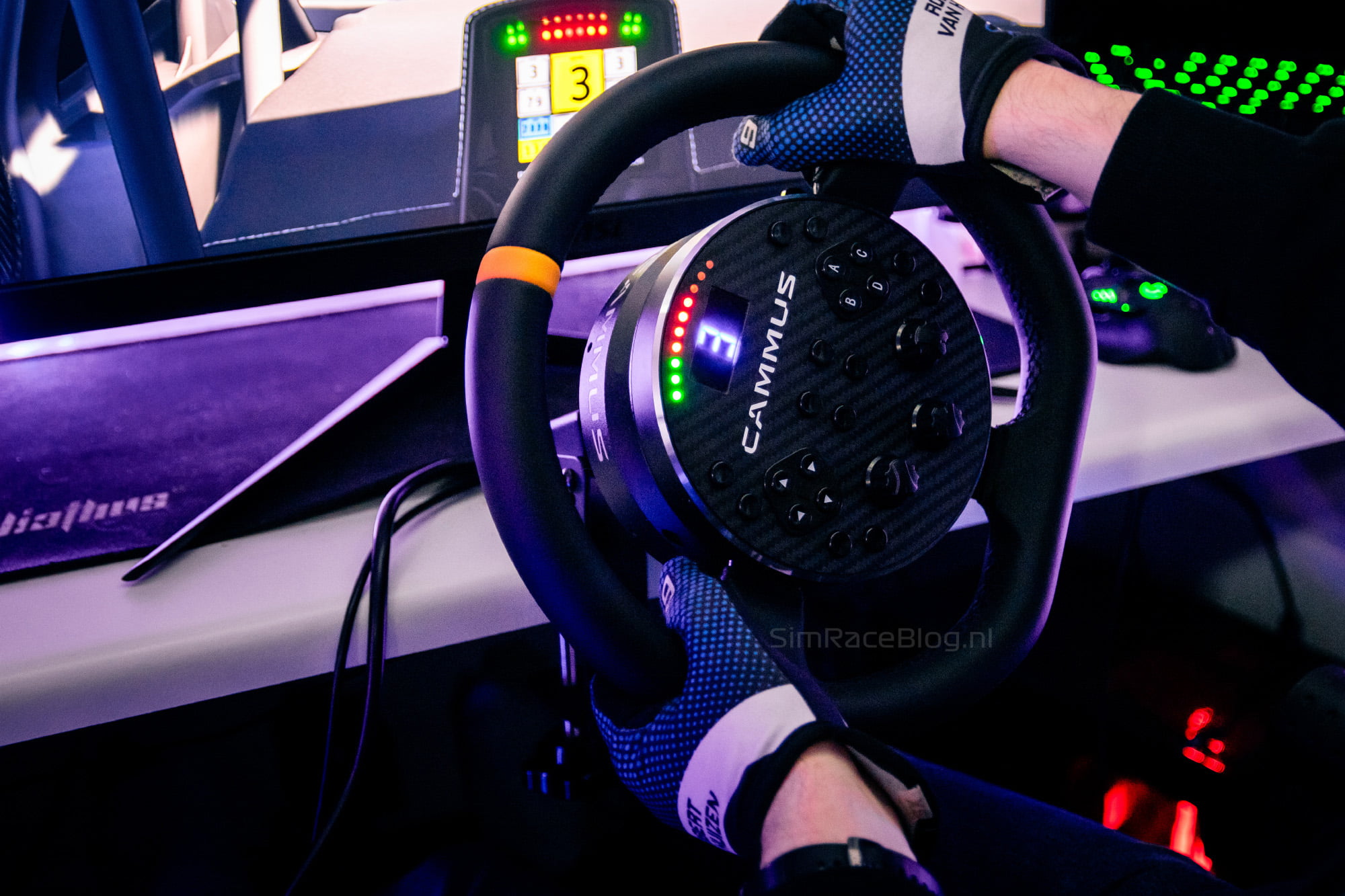

The actual force feedback is good; it feels immediate, and the various effects are well perceptible. We do miss some lighter, refined details, such as road texture or driving over curbs. However, we find this acceptable because, overall, the force feedback simply feels superb for its price range. We can effectively sense when the car is sliding or losing traction, enabling us to react promptly. Thanks to the materials used, the clamp of the Cammus C5 feels extremely robust and solid, minimizing the loss of details through the clamp and the desk during driving. Under heavier loads, we do feel and hear vibrations through our desk, which can sound intense, particularly during crashes.



Rear controls
The paddle shifters at the back of the steering wheel, as previously noted, are small—very small. However, they are perfectly positioned in our case, and we can comfortably operate them with our index and middle fingers. We can envision, though, that this might not be the case for everyone, especially individuals with (above-average) large hands who might find it a bit challenging. The shifting feel provided by the paddles, however, is surprisingly good. The paddle shifters have a short travel and a very satisfying click.

Front controls
The buttons at the front do their job well. They don’t feel exceptionally good or bad; they are straightforward push buttons with a short travel and a satisfying click. The resistance required to press them is good, and the eight push buttons around the wheel, along with the groups of four buttons with arrows and A, B, C, and D labels, are comfortably within reach of our thumbs. The rotary encoders, which we use as directional encoders for traction control, ABS, and brake bias, also feel good. They require a pleasant amount of force to operate, and the click with each rotation is comfortable. The display showing speed or gear is easily readable, and the RPM LEDs are also user-friendly and dimmable.

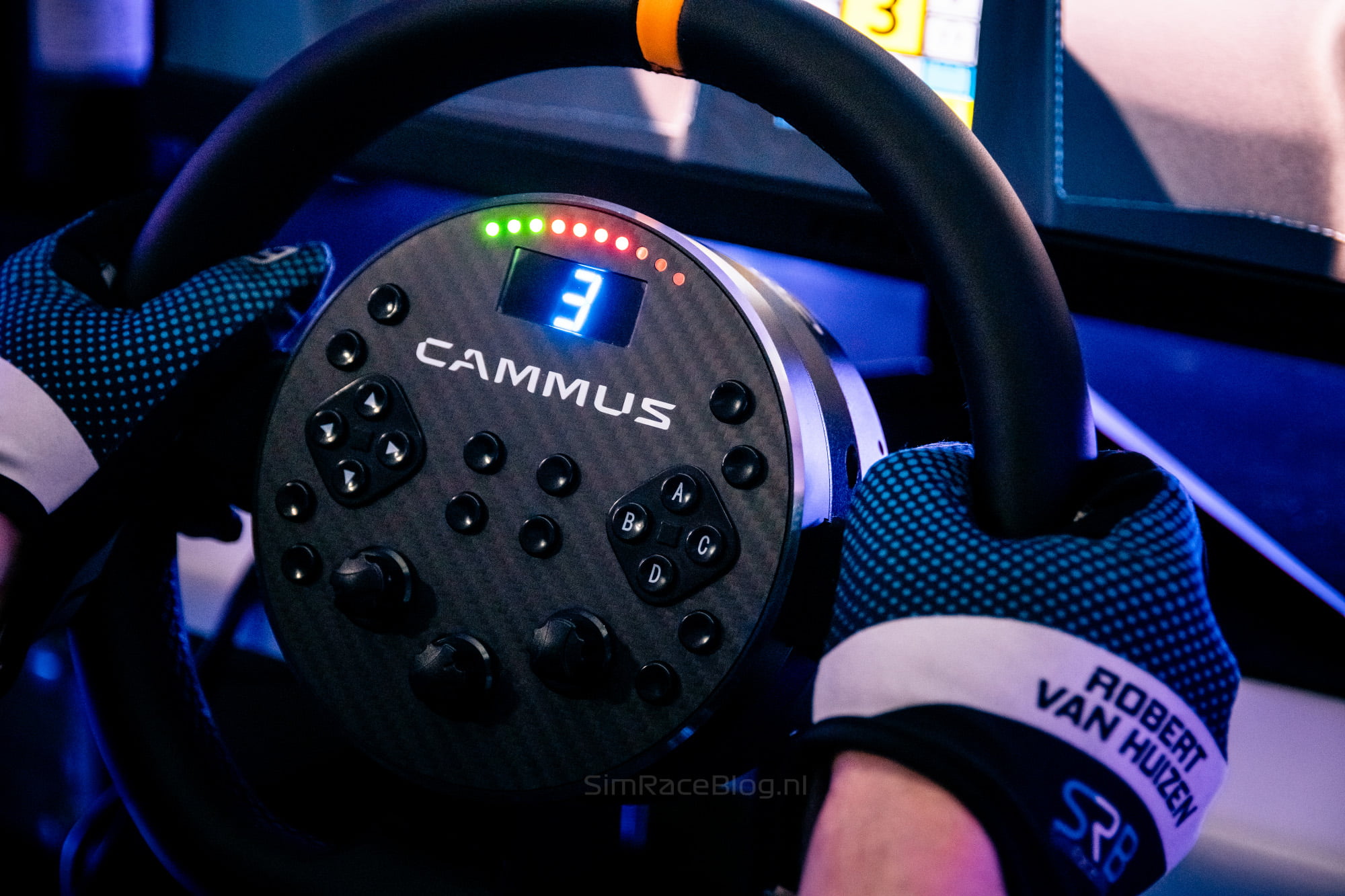
Conclusion
Cammus has introduced an interesting product with the Cammus C5 steering wheel; a steering wheel with a built-in 5Nm direct drive motor suitable for desk use. The overall build quality of the steering wheel is simply impressive for its price range. Constructed with high-quality materials, the finish looks excellent, despite the out-of-the-box damage to our desk clamp. The software and control of the steering wheel are also well-executed, providing sufficient detail without overwhelming novice users.
The driving experience of the Cammus C5 steering wheel is equally impressive. While it can’t compete with the larger wheelbases we have tested, considering its compact form and the fact that it can be used on a desk, the Cammus C5 simply offers an exceptionally good driving experience. The steering wheel packs a considerable amount of power, and most in-game effects are well perceptible. We can easily discern through the steering wheel when our virtual car is sliding or losing traction, allowing for easy corrections. We do miss some of the subtle details, and we need to dial back the in-game force feedback to avoid clipping, but these observations are not uncommon for lighter wheelbases, so it’s not a significant drawback.
The steering wheel does have a few minor drawbacks. With a diameter of 278mm, it is relatively narrow. The paddle shifters can also be considered quite small, although they are positioned comfortably for us. The most significant drawback is the lack of an upgrade path for this steering wheel. The wheelbase is integrated into the steering wheel, so you cannot mount another steering wheel on it. However, this is a nuanced drawback, as this limitation is common among other steering wheels in this price range and below.
All in all, Cammus has introduced a unique and perhaps eccentric steering wheel to the market. For sim racers on a tight budget looking for a direct drive experience, those who want to race on their desk, or simply individuals who don’t plan to upgrade to a wheelbase with a swappable steering wheel, the Cammus C5 is certainly worth considering.
At the time of writing, the Cammus C5 Direct Drive steering wheel is priced at $249.00 on the Cammus webshop, with VAT included when ordered through the ‘Over-sea’ warehouse page. For $299.00, the Cammus C5 is available with the CP5 pedal set. If you want to enjoy a 5% discount and support SimRaceBlog, use the discount code we provide for use in the Cammus webshop.
Do you want to stay informed about SimRaceBlog content, news, announcements and (future) give-aways? Follow us on Instagram @simraceblognl and/or our Discord channel.












